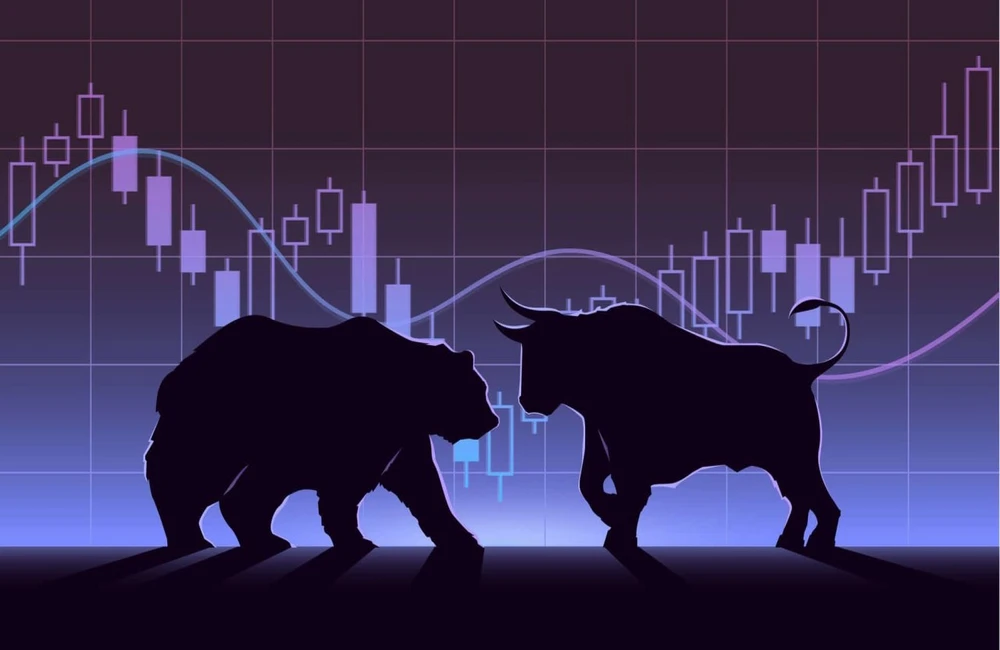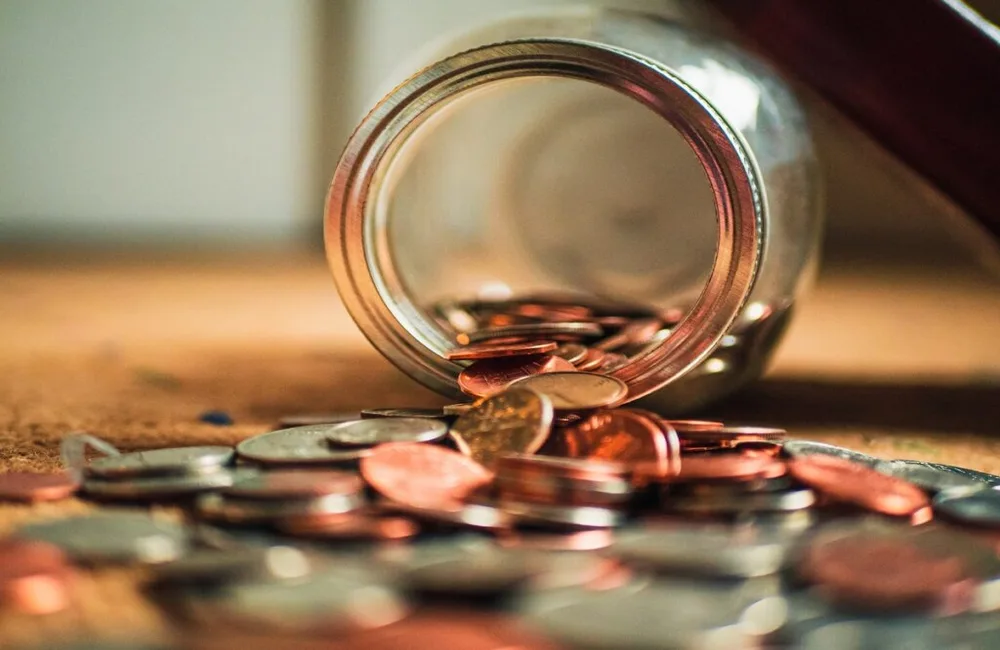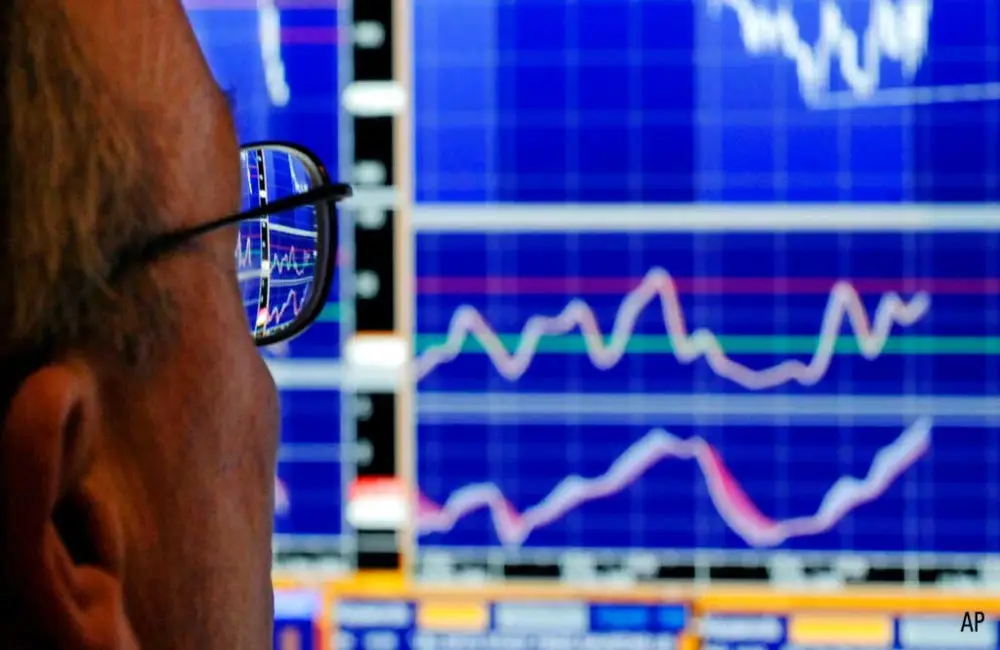ASX futures were 12 points or 0.2% higher at 6689 at 8am, laying the groundwork for a solid early session.
Overseas, the S&P 500 gained 1 percent, ending near its high of the day. The technology-heavy Nasdaq Composite Index climbed 1.4%, and Tesla rose 9.8% after reporting quarterly results that were better than expected. The Dow Jones Industrial Average rose 0.5%, swinging between modest gains and losses for most of the session.
The benchmarks started mostly weaker and quickly stumbled after the White House reported that President Joe Biden, who is 79, had tested positive for Covid-19 and has “very mild symptoms.”
Consumer discretionary and information technology, downtrodden sectors, were among the market’s brightest spots. Those segments have proved painful this year as investors wring their hands over the prospect of lingering inflation, fading demand and a deceleration in economic growth.
“Markets are sensitive to volatility from a bunch of different places currently,” said George Mateyo, chief investment officer of Key Private Bank.
The European Central Bank raised rates by 0.5 percentage points, more than the quarter-point increase that had been anticipated, though the policy makers had left it open for them to choose more than a quarter-point hike.
At home, the S&P/ASX 200 finished the day up 0.5 per cent at 6794.3 on Thursday, surging higher in afternoon trade, having been flitting in and out of negative territory during the session.
The financial and health care sectors posted solid gains, outweighing declines in commodity stocks. Tech was the best-performing sector, thanks to the Nasdaq Composite’s outperformance in the US session.
Among the banks, Macquarie, Westpac, Commonwealth and ANZ all rose between 0.4% and 2.15%. CSL added 1.4%, and ResMed was up 2.5% ahead of its 4Q results.
Xero, WiseTech and Block gained between 3.3% and 6.7% and buy-now-pay-later firm Zip Co. jumped 17% after it said it would streamline its business back to core products and regions in the chase for profits.
The ASX 200 has gained 2.9% this week.
The stronger US dollar led to a strong rally in commodity markets following weeks of losses, and came after iron ore edged down 1.8 per cent to US97.65, Brent crude skidding 2.9 percent to $US103.86 a barrel and gold rose 0.2% to US$1,735.10.
In local bond markets the yield on Australian 2 Year govt bonds moved up to 2.78 and the 10 Year is moving to 3.56. Offshore, US 2yr Treasury yields have dropped to 3.09% with US 10yr government nominal bond yields also fell to 2.87%.
The Australian dollar rose to 69.26 US cents at 7.00am AEST, higher than yesterday's close of 68. The Wall Street Journal Dollar Index, which measures the U.S. currency against 16 others, decreased to 98.80.
Asia
China stocks finished lower on continued fears that the country’s rising Covid-19 cases could prompt new restrictions. The Shanghai Composite Index, which is closely monitored on sentiment about trade, lost 1.0% to 3272.00, and the Shenzhen Composite Index slid 0.8% to 2193.81, while the ChiNext Price Index was 0.5% lower at 2751.41.
Shares of auto stocks dropped as traders fretted that another wave of Covid-19 could erode demand for cars and disrupt production. BYD Co. dropped 2.2% and SAIC Motor lost 1.5%. China-US will remain under the spotlight, especially after Biden announced on Thursday he plans to talk with China President Xi Jinping “over the next 10 days”, one that could brighten market views for the reversion of Trump-era tariffs.
Hong Kong’s benchmark Hang Seng Index slid 1.5% to 20574.63 as losses among property developers and financial companies trumped some tech gains.
Chinese homeowners’ boycotts of mortgage payments are a “reminder of challenging liquidity conditions for private developers and low consumer confidence,” says senior equity analyst Iris Tan in a note.
Recent drops in Chinese banks’ share prices were prompted by market concerns that the situation could lead to systemic risks in the financial sector, but such fears seem overblown at this point, according to Tan. Country Garden Holdings dropped 6.5% and China Resources Land fell 3.8%, while China Merchants Bank lost 2.3%. Among the gainers, NetEase gained 6.3% and Sunny Optical advanced 3.5%.
Japanese shares finished higher, lifted by advances in tech and electronics companies, after the Bank of Japan held its easing policy unchanged. NTT Data and Fujitsu both rose 2.1%. The Nikkei Stock Average added 0.4% to 27803.00.
The yield on the 10-year Japanese government bond eased half a basis point, to 0.235 percent. Investors are awaiting the European Central Bank’s policy decision later in the day and corporate earnings. The dollar was at 138.18 yen, versus 138.23 late Wednesday in New York.
Europe
European shares traded mixed following a European Central Bank rate hike that was larger than expected. The ECB raised the rate level by half a full percentage point, rather than the quarter-point increase anticipated, although economists had been suggesting it might go for more than that quarter-point.
The pan-European Stoxx Europe 600 rose 0.4 percent, the French CAC 40 added 0.3 percent and the German DAX fell 0.3 percent. Italy’s FTSE MIB was 0.7% weaker after Italian premier Mario Draghi stepped down.
“Volatility has been the name of the game here, with Christine Lagarde announcing an additional 50 basis-point rate rise we didn’t expect in order to calm the euro down and prevent inflation,” writes IG analyst Joshua Mahony.
The London FTSE 100 finished Thursday slightly in the green, up 0.1%, as investors prepared for a larger-than-expected 50 basis-point rate hike by the ECB and commodity prices remained on the back foot despite concerns about slowing growth, says CMC Markets UK chief market analyst Michael Hewson, in a note.
The return of gas through Nord Stream 1 is casting concerns over political instability in Italy, he says.
Howden Joinery led the gains with a 4.2% rise after saying it had made a strong start to 2022. Pharmaceuticals company Dechra Pharmaceuticals was the biggest faller, falling 3% after the firm finished discounted share placing.
North America
U.S. stocks rose Thursday, as investors scooped up beaten-up growth shares on the heels of another round of earnings reports from bellwether companies like Tesla.
The S&P 500 rose 1 percent, to end near its highs of the day. The tech-heavy Nasdaq Composite Index was up 1.4%, with Tesla spiking 9.8% after reporting second-quarter results that outstripped analyst expectations. The Dow Jones Industrial Average rose 0.5%, after being up and down by small amounts for most of the session.
The benchmarks mostly started lower and briefly stumbled after the White House announced that President Joe Biden, 79, tested positive for Covid-19 and has “very mild symptoms.”
“Markets are under tender notice with respect to significant levels of volatility in a multitude of areas right now,” said George Mateyo, the chief investment officer at Key Private Bank.
Beaten-down sectors, including consumer discretionary and information technology groups, were among the market’s best performers. Those sectors are suffering this year, as investors fret about the risk of persistent inflation, flagging demand and slowing economic growth.
Pacing the S&P 500, Tesla shares rose 9.8%, or $72.62, to $815.12 after reporting quarterly earnings that exceeded expectations. The electric carmaker, however, also posted its first drop in quarterly profit in more than a year.
Stocks have stabilized over the past few sessions, rebounding from a difficult start to the second half of 2022 and putting the three main indexes on track to notch gains on the week and for July. Companies, including Netflix and Tesla, have reported strong earnings, giving investors more confidence to snap up previously rejected stocks.
“There’s slightly more bullishness around the growth space than there was a couple of months ago,” said Edward Park, chief investment officer at Brooks Macdonald.
Yet some investors say they anticipate continued volatility. “The big question is if we have a big earnings recession that’s coming early 2023,” Mr. Park said.
Thursday also delivered a flood of disappointing corporate dispatches.
Shares of AT&T dropped $1.56, or 7.6 percent, to $18.92 after the company lowered its 2022 estimate for free cash flow. Verizon Communications dropped $1.41, or 2.9 percent, to $47.66, the worst performer in the blue-chip Dow.
Airline shares slumped, too. United Airlines, which warned about the impact of raising fuel prices, dropped $4.24, or 10 percent, to $37.44. American Airlines dropped $1.13, or 7.4 percent, to $14.08 after it reported a profit that was weaker than analysts had been expecting.
Shares of cruise lines slid after Carnival announced plans to sell $1 billion of new stock. Carnival dropped $1.24, or 11 percent, to $9.85 and had the most notable decline in the S&P 500. Shares of Royal Caribbean Group and Norwegian Cruise Line Holdings were also among the index’s biggest losers.
The U.S. currency has been on a tear this year. The WSJ Dollar Index, which gauges the U.S. currency against a basket of 16 others, is 1.7% higher this month and 10% this year.
Some companies have seen their earnings nicked by a strong dollar of late. When the value of the dollar rises relative to other currencies, it makes American products more expensive overseas, so international sales take a hit.
It has also placed a damper on commodities prices, including a recent bridle on the bull run in oil and metals and the gentle release of inflationary pressures.
“You’re hearing some of the talk in earnings season about the strength of the dollar and where the consumer is, but that’s been muted,” said Jeff Kilburg, the chief investment officer at Sanctuary Wealth. “We are just seeing the strength of the dollar truly offsetting inflation.”























